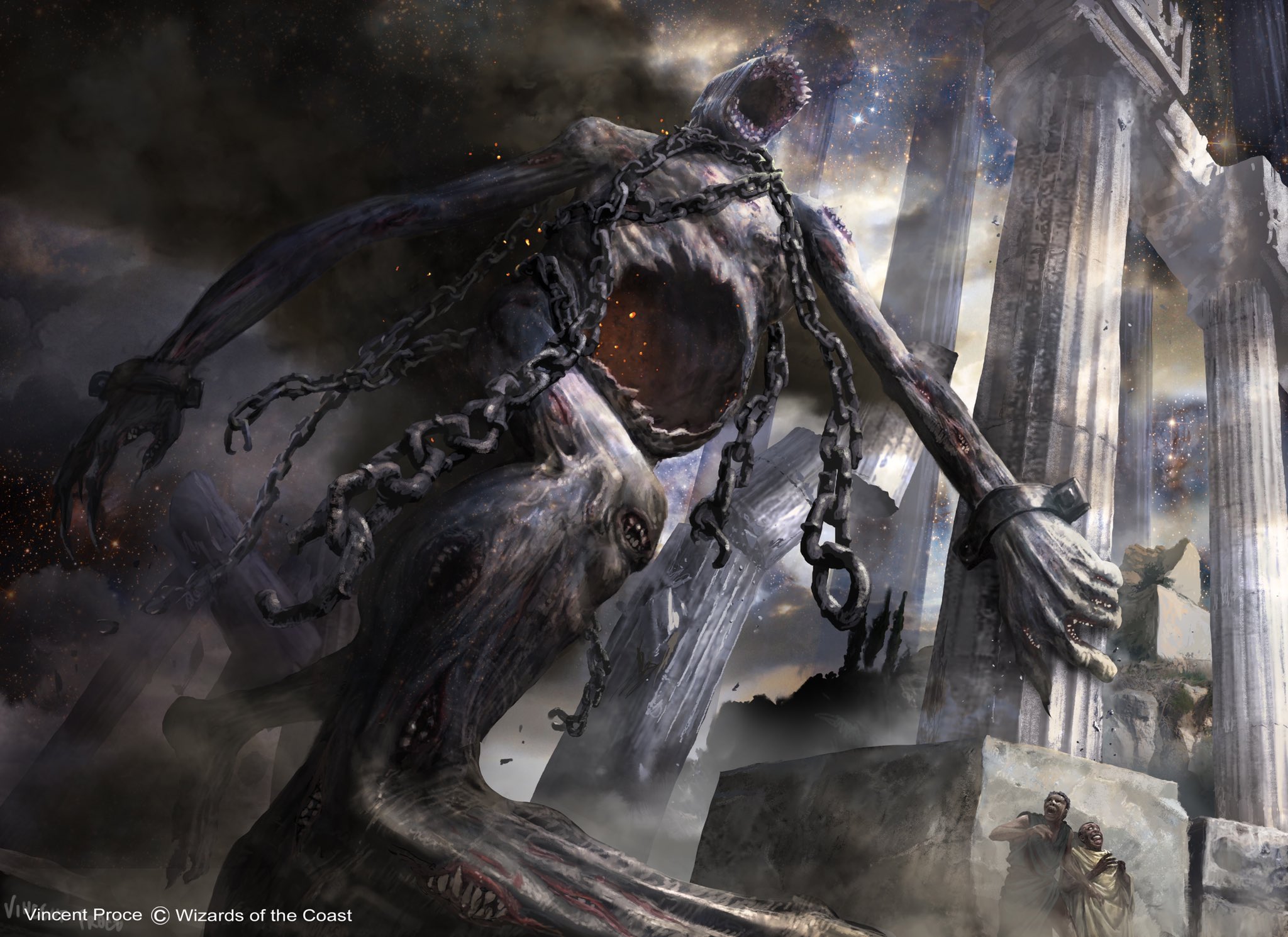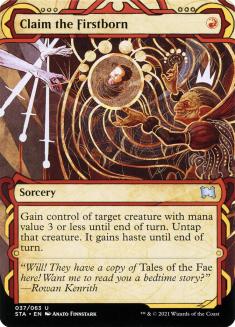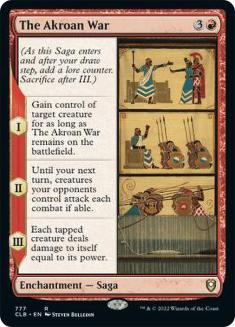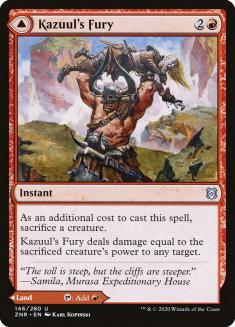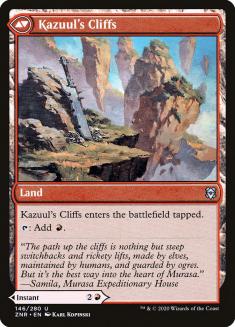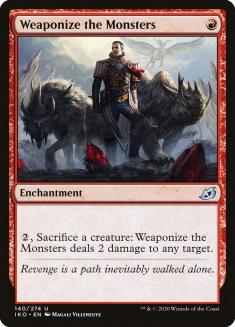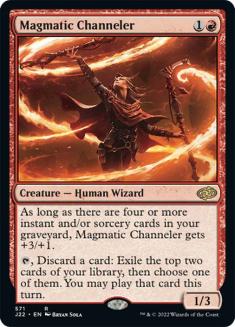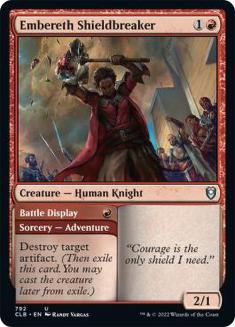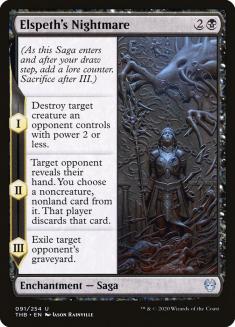In a world where Gruul Adventures is the best deck in Standard, Rakdos Midrange should be the perfect deck to play. You have a pile of spot removal and card advantage, typically what you want in a midrange mirror.
In theory, Rakdos Midrange should have all the tools to be successful. Unfortunately, the traditional versions tend to fall short. Part of the problem is that your strongest one-mana removal option doesn’t hit the majority of Gruul Adventures’s creatures. Having Bloodchief’s Thirst as a tempo tool should be incredible, but they’re usually able to play around that by sideboarding out Brushfire Elemental.
Thankfully, there’s a one-mana card that can kill three-drops, albeit with a little help.
I was watching Nick Prince stream recently and one of his opponents was trying to make Rakdos Sacrifice a thing. Most of what was going on seemed like nonsense, but then I remembered The Akroan War was a card.
Those two, together with some sacrifice effects, give Rakdos Midrange some incredible removal against Gruul Adventures. Shortly thereafter, the deck took off, as many other people had roughly the same idea.
Obviously, you’ll want to always have a sacrifice outlet with your Threaten effects. Since Cauldron Familiar is banned, we don’t have any real reason to use Witch’s Oven in large numbers. Other than Woe Strider, our sacrifice effects are limited or mediocre. Village Rites is the easy one, especially because we have some sacrificial bodies.
It still felt light on sacrifice outlets and that’s why players added Kazuul’s Fury. A Fling is a solid sacrifice outlet but can be potentially dead. In a sacrifice deck, it will be close to 50/50 whether you play it as a spell or a land, which is pretty cool. It would be easier to have a Carrion Feeder or Viscera Seer, but I appreciate moving away from things like that and making players have to find clever solutions.
If you use Claim the Firstborn and Kazuul’s Fury, you’re probably trading two-for-two for their best creatures. It’s not that much different than having two Heartless Acts, which isn’t impressive. However, Claim the Firstborn has more utility than just that situation. Plus, you’re usually getting in some damage because they won’t want to block the creature you stole. Claim can also help you sneak in the last points of damage, either by stealing your opponent’s creature or giving your own creature haste.
When your deck has chip damage from Bonecrusher Giant or Kroxa, Titan of Death’s Hunger, Threatens and Flings can be powerful. Overall, the sacrifice version has higher burst damage potential and stronger removal when things come together.
Obviously we need to account for the rise of Esper Doom Foretold (Yorion). Doom Foretold isn’t exactly a problem, especially if we wanted to include maindeck Skyclave Shades. Having a consistent enabler for Village Rites and another maindeck hate card for Dimir Rogues wouldn’t be the worst. Realistically, you’re going to have too many dead cards in the first game to put up much of a fight. You can fix the matchup by sideboarding in Treacherous Blessing if you want though.
Right now, I’m a big fan of the Sacrifice version, but I can see the case for sticking with a traditional build and tuning it. Take these decklists with a grain of salt. Rakdos Midrange is one of the most customizable decks in Zendikar Rising Standard and should be treated as such. For example, if you think I’m over-preparing for mirror matches with Soul-Guide Lantern and you’d rather have something else, by all means make those adjustments.
For the Sacrifice version, you could do worse than copying a successful version.
Creatures (17)
Planeswalkers (1)
Lands (18)
Spells (24)

I wouldn’t change much from this list. As I mentioned, The Akroan War is excellent and I would happily play a third copy. Skyclave Shade is a fine maindeck card, especially if you’re expecting more Esper Doom Foretold decks.
Weaponize the Monsters is extremely inefficient but it’s another sacrifice outlet and a solid finisher. I could see trying a Witch’s Oven instead but would only do that if you’re interested in playing longer games. Despite having a ton of mana sinks and being able to play a long game, you’re still more interested in ending the game rather than prolonging it. Use your Kroxas and Oxen to keep up the pressure, not grind your opponents out.
My biggest dislike about these decks is that Kroxa, Ox of Agonas, and the surrounding engine aren’t perfect in a sacrifice shell. Part self-mill and part sacrifice don’t exactly mesh well. There’s not much difference between part self-mill and a pile of spot removal though, so maybe my complaint is nonsense. I’ve also tried to build variants of the sacrifice shell without leaning on the self-mill engine but Rakdos doesn’t have enough playable cards to justify it.
Even though everyone has cut it at this point, I still like Magmatic Channeler quite a bit. Sadly, the games aren’t conducive to it being a great card. It’s closer to being playable when Gruul Adventures is one of the better decks though. I wouldn’t be surprised if it creeps into some of the Sacrifice variants because of how much the deck is trying to assemble various combinations of cards.
Creatures (18)
- 2 Rankle, Master of Pranks
- 2 Embereth Shieldbreaker
- 4 Bonecrusher Giant
- 2 Ox of Agonas
- 4 Mire Triton
- 4 Kroxa, Titan of Death's Hunger
Planeswalkers (2)
Lands (20)
Spells (20)

If Esper Doom Foretold didn’t exist, you could safely remove Pelakka Predation; Liliana, Waker of the Dead; and Treacherous Blessing. Skyclave Shade could potentially go too. You’re still at a disadvantage to win the match but at least you have a shot.
Maindeck Embereth Shieldbreaker is important for busting up The Great Henge, Glass Casket, and the occasional Embercleave. The easiest way for Esper Doom Foretold to beat you is by cleanly removing your Kroxas and maindeck artifact removal punishes them. They aren’t a strict necessity against Gruul, especially if you’re the Sacrifice version, but they do help.
Duress is pretty great against everyone. Thanks to the Gruul Adventures players realizing the power of The Great Henge and Shatterskull Smashing, even the aggro creature deck has plenty of hits. Getting to tag spells that are actually creatures like Tymaret Calls the Dead is nice too. Unfortunately, it doesn’t work the same against Adventure creatures.
I’m splitting Liliana and Rankle, Master of Pranks. Both are great cards in the archetype but their usefulness depends on your opponent and the game state. You don’t want to flood on either, so splitting makes sense unless the metagame is highly specific.
Elspeth’s Nightmare can help against Dimir Rogues, Esper Doom Foretold, and Gruul Adventures but it has many of the same issues as Bloodchief’s Thirst. I could see maindecking some copies but its variance is high.
My manabase is this version has Triomes and Castle Locthwain, whereas the Sacrifice version has Temple of Malice instead. The Sacrifice version has a clunkier mana curve, so it will have a more difficult time emptying its hand, making Castle difficult to use. It’s also trying to set up various combos and doesn’t have time to cycle, so Temple of Malice is the easy choice.
In this version, I prefer having access to Castle Locthwain, even if I’m not planning on cycling my Triomes. The games go longer, especially if your opponent is attacking your graveyard in post-sideboard games. You could make the argument for freerolling a single Castle and not playing Triomes but it’s come up enough to warrant a heavier package.
If I had to play a tournament, I’m not sure what I’d actually play, but some form of Rakdos should be a consideration. Sadly, the format has shifted away from Dimir Rogues being great because I really enjoy playing that deck. Gruul Adventures and Esper Yorion are obviously solid choices but Rakdos can hang.

